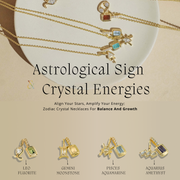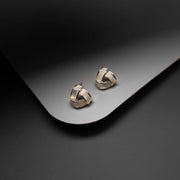Amethyst History and Symbolism
In many ancient texts, amethyst was considered a gem that could prevent drunkenness after wearing it.
However, some speculate that this claim stems from a misunderstanding. Some people believe that this "amethyst" is actually a red garnet.
When this "amethyst" is used as a wine glass, the clear water poured in will turn red like wine (this is due to the slightly reddish liquid flowing out). This liquid will give the illusion that the user is drinking wine, but can avoid drunkenness.
- The ancient Egyptians used amethyst as a gemstone, and in ancient times it was mainly used for intaglio gemstones.
- The ancient Greeks believed that amethyst could prevent drunkenness.
- The Roman god of wine Bacchus is also associated with amethyst. It is believed that amethyst can prevent drunkenness. People often carve goblets with amethyst to prevent drunkenness and keep their heads clear.
- Medieval European soldiers wore amethyst amulets for protection during battles because they believed that amethyst could cure diseases and keep their heads clear.
- Amethyst beads have been found in Anglo-Saxon tombs in England.
- Anglican bishops often wear bishop rings with amethyst.
Amethyst is well known for its healing properties. Each amethyst has its own unique healing properties and characteristics.
For example, light amethyst is associated with self-esteem and self-awareness, while dark amethyst gives us a clear vision of the future, provides strong foresight, and enhances our ability to predict the potential outcomes of decisions.
It helps promote physical and mental health, including psychological, physical, and spiritual levels.
- From a physical perspective, amethyst can strengthen the immune system, relieve tension and headaches, and promote restful sleep.
- From a spiritual perspective, it can relieve worries and fears, promote clear thinking, and trust your intuition.
- From a spiritual level, amethyst is able to open the crown chakra and promote connection with higher energies.
Therefore, it is believed to help relieve anxiety, depression, clear the mind, dispel harmful thoughts, promote good sleep, and relieve tension and headaches. Amethyst is an ideal stone for those seeking inner peace, spiritual growth, and protection from negative energies.
Where are Amethyst found?
Amethyst is widely distributed around the world. The core production areas between 2000 and 2010 included Brazil, Bolivia, Uruguay, Zambia, and Canada. In addition, small amounts are produced in Africa, Brazil, Spain, Argentina, Russia, Afghanistan, South Korea, Mexico, and the United States.
Brazil and Uruguay are the main production areas, and amethyst is often formed in large geodes or hollow agates in volcanic rocks. Zambia is the main production area in Africa with a large annual output (about 1,000 tons).
Important production areas in the United States include Four Peaks, Arizona, and Jackson Crossing, Georgia, while Canada is known for the largest mine in North America in Thunder Bay, Ontario. Amethyst has also been found sporadically in many other states in the United States and in Nova Scotia, Canada. It was designated as the state stone of South Carolina, and its specimens are on display at the Smithsonian Museum.
What color is Amethyst?

Amethyst's primary color ranges from pale purple to dark purple, often with red or blue secondary hues.
Top-quality "Dark Siberian" amethyst is known for its ideal color balance, showing about 75-80% purple, 15-20% blue, and may have a red tint in certain lighting.
Another type, "French Rose," is characterized by a light lavender hue, and its popularity has risen due to marketing.
Amethyst often exhibits color banding, with the color usually strongest at the tips of the crystal. This makes gem cutting challenging, and the cutter must strive to achieve a uniform color in the finished product. Natural rough may have only a thin layer of purple or very uneven color, resulting in only some areas suitable for faceting.
Natural amethyst has a red-purple-blue-purple dichroism. Heating causes it to change to yellow-orange to dark brown, and partial heating can produce ametrine. Long-term exposure to strong light will cause the color to fade, but the color can also be deepened by artificial irradiation.
Types of Amethyst
Amethyst is best known for its iconic purple color, but its color spectrum is much richer than you might think. From deep royal purple to fresh mint green to soft pink, the amethyst family shows amazing diversity.
Classic Amethyst

Traditional amethyst interprets our classic understanding of this gemstone. Its purple tones range from the softest lavender and lilac to the richest and deepest royal purple (often called "raspberry red purple"), showing the charm of purple gemstones.
This purple color mainly comes from iron impurities in the crystal structure and natural radiation. As a member of the quartz family, amethyst is found all over the world and is often produced in the form of geodes.
Among them, the highly saturated and deep royal purple is particularly precious, symbolizing royalty and elegance. It is the darling of high-end jewelry, and the darker the color, the higher the value.
Brandberg Amethyst

Brandberg Amethyst is a unique treasure to the Brandberg Mountains in Namibia, known for its rarity and uniqueness. Its color range is extremely wide, from very light purple to rich dark purple.
Most strikingly, its crystals often contain striking "skeleton" structures (ghost crystals or skeleton crystals). Even more unique is that it is often intergrown with smoky quartz and white crystal, and dotted with scarlet or silver hematite spots.
In some crystals, trace amounts of green, blue or other purple minerals can be seen intertwined, forming a unique mineral intergrowth spectacle.
Auralite-23 Amethyst

Auralite-23 Amethyst from Canada is one of the oldest crystals on earth, estimated to be about 1.2 billion years old, and extremely rare.
The name "23" comes from the fact that it may contain up to 23 different mineral components (usually 2-7 in a single crystal), with amethyst as its main constituent mineral and color base, so the overall color is dark purple.
Among the many variants, the "Red-Tipped Auralite" with a red tip has become the most sought-after and precious variety due to its unique color combination and rarity.
Siberian Amethyst

"Siberian Amethyst" no longer refers to a specific origin, but rather to the highest quality grade of amethyst color. The term derives from the (now depleted) Siberian region of Russia, where this superb color gemstone was historically produced.
It refers specifically to the finest amethyst with a coveted deep royal purple hue, often with flashes of red and blue. Under this quality standard, the market typically uses AAA (darkest, best) to A (lightest) to grade the color depth, but it should be noted that different merchants may have slightly different grading standards.
Rose de France Amethyst

French Rose Amethyst is uniquely charming with its delicate, light, and soft hue. It presents a light lavender, lavender, or pink-purple color, often with a light pink undertone, exuding a gentle and romantic atmosphere.
This light hue provides a fresh and charming alternative to the traditional dark purple, and is favored by those who love femininity.
While dark purple is often preferred in the market, the unique beauty of French roses highlights personal aesthetic preferences, and choosing the color that brings the most pleasure is the key.
Green Amethyst

Green amethyst (more accurately, green quartz/green crystal) presents a refreshing light green hue, such as mint green or olive green, which is very different from its iconic purple.
This color change is usually caused by the change in the valence state of the iron element in natural amethyst after it is formed due to high temperatures. Natural green crystal is very rare and mostly produced near stable amethyst deposits;
The vast majority of "green amethyst" jewelry on the market is obtained by artificially heating or irradiating amethyst. Green symbolizes nature, growth and health. Wearing green amethyst is believed to help calm the mind and relieve stress.
Pink Amethyst

Pink amethyst is a relatively newly discovered unique variety. It presents a slightly hazy rose pink, light pink or deep peach pink, which contrasts sharply with the purple tones of other amethysts.
The main known production area is limited to the Patagonia region of Argentina. Its attractive pink color does not come from iron, but from tiny hematite inclusions that seeped into the gem during the crystallization process.
Pink amethyst is often associated with the heart chakra and is believed to have a positive effect on emotional healing, so it is also figuratively called the "Band-Aid for the Heart".
Chevron Amethyst

Chevron Amethyst (also known as dogtooth amethyst) is named for its unique texture, the most notable feature of which is the "V"-shaped or striped pattern of alternating white quartz and purple amethyst inside or on the surface of the crystal.
It is essentially a symbiotic combination of purple amethyst and white quartz, forming a sharp color contrast.
Its main sources include India, Russia and Brazil. This unique texture and strong visual contrast make it popular in the field of carving.
Ametrine

Ametrine is an extremely rare and unique variety of quartz. Its charm lies in the fact that two distinct color domains exist simultaneously on the same gem crystal - purple (amethyst) and yellow/gold (citrine).
Its name "amethyst" is a combination of "amethyst" and "citrine". This magical two-color phenomenon is usually caused by temperature gradients in the crystal growth environment, resulting in iron elements in some areas being in a state of generating purple, and iron elements in other areas being in a state of generating yellow; natural geological heating or artificial treatment (heating amethyst) can cause this effect.
The Anaxi mine in Bolivia is almost the only commercial source of natural ametrine (hence why it is also called Bolivian stone), and its rarity and unique beauty make it very expensive. Cutters will carefully design the facet positions to maximize the beauty of its two-color fusion or contrast.
Moss Amethyst

The charm of moss amethyst lies in its rich mineral inclusions, forming a unique moss, branch or web texture, each piece is like a miniature painting of nature.
The most common inclusions are black needles or columns of tourmaline (tourmaline), so it is sometimes called "tourmaline amethyst". The color of goethite (an iron-containing mineral) inclusions is also more common, which is reddish brown, yellow brown or brown-black, showing a gorgeous "moss" effect or even rainbow colors.
Amethyst itself is usually light purple to medium transparent purple. Brazil and Sri Lanka are its main sources. The diversity of inclusions shape, color and distribution makes each piece of amethyst unique.
Cape Amethyst

Cape amethyst is characterized by its soft, hazy light to medium purple hues, creating a gauzy visual effect.
This unique beauty is due to the delicate layered or banded structure within the crystal, which is essentially a delicate interweaving of light purple amethyst and milky quartz (or cloud-like inclusions).
The veined purple is particularly eye-catching and popular in marble-style or natural-style jewelry designs.







